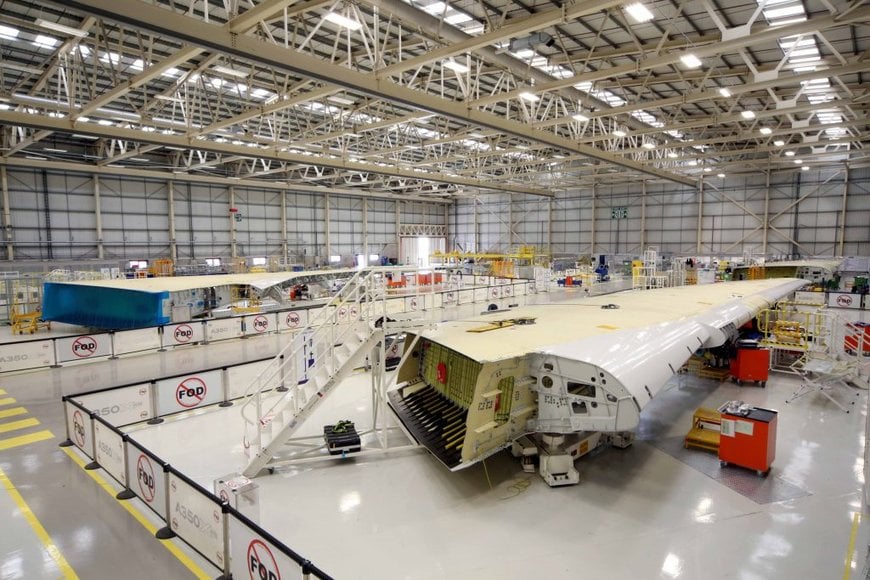www.industry-asia-pacific.com
09
'19
Written on Modified on
Autodesk and Airbus Demonstrate the Impact of Generative Design on Making and Building
Both Autodesk and Airbus are dedicated to pushing the boundaries of advanced technologies in the pursuit of innovation and a more sustainable world. So, it should come as no surprise that the two companies are teaming up to fundamentally change how things will be manufactured and built in the aerospace industry of the near future

Today at Autodesk University in Las Vegas, Airbus revealed details of how it’s using generative design to tackle complex engineering, architectural and systems challenges. Solving those challenges will enable a smarter, more efficient, and more economical business, while better catering to the needs of its workforce and with less negative impact on the environment.
As part of an ongoing effort, Airbus is reimagining multiple structural aircraft components, applying Autodesk generative design to develop lighter–weight parts that exceed performance and safety standards. In an industry where less weight equals less fuel consumption, using this approach presents a huge opportunity to reduce the adverse effects of air travel on the environment.
Airbus is also looking beyond airplane parts to the processes and spaces for making them, employing generative design for the layout of adaptable, DGNB and LEED certified factories with streamlined logistics to facilitate improved employee work conditions and greater productivity.
Bionic Partition 2.0
Back in 2015, Airbus unveiled its first generative design proof-of-concept. The “bionic partition” is a next-generation version of the wall and jumpseat support structure that divides the passenger compartment from the galley of a plane.
The initial design was promising – 45 percent lighter than the traditional part yet just as strong. Airbus estimated the new design approach could save nearly half a million metric tons of CO2 emissions per year if rolled out across its backlog of A320 planes.
Originally the intention was to fabricate the new partition using metal additive manufacturing. But due to a range of variables in the manufacturing market and materials requirements, it became clear that an alternative fabrication process would be necessary. Fortunately, Autodesk generative design technology has continued to mature and is now capable of optimizing for multiple advanced manufacturing techniques during the design phase of product development.
For Airbus, this meant they could use generative design to create a plastic, 3D-printed mold for the partition, and then cast the part in an alloy that’s already qualified for flight. Bionic partition 2.0 is just as strong and light as its predecessor and can be fabricated at scale more affordably.
“The revised design makes the bionic partition much more viable for production. The first prototype is in production, which we hope to finish before the end of the year,” said Bastian Schaefer, the designer at Airbus who has been leading the collaboration with Autodesk. “The process and technology have evolved to where we can now manufacture multiple units at a considerably lower cost.”
Airbus is in the process of utilizing generative design to rethink other structural aircraft components, including the leading edge of the vertical tail plane (VTP) of the A320. The purpose of a VTP (or vertical stabilizer) on an airplane is to provide directional stability and reduce aerodynamic inefficiency caused by side-to-side movement.
Generative design is enabling the team to evaluate hundreds of design alternatives that all meet objectives for VTP stiffness, stability and mass.
Factory of the Future
Positive responses to what generative design could do for aircraft components led Airbus to explore what the technology might do for other parts of its business. Earlier this year, the team began thinking about how generative design could be applied to the building design, layout and workflows of its factories.
First, they looked at an assembly line for A350 wings where a significant amount of human labor and several different tools are required. The objective was to figure out how a single factory bay could be configured for multiple wing variations from the different generations of the A350, with optimal tool locations and travel paths, and minimal congestion and bottlenecks.
Airbus is now turning its attention to possible concepts for using this technology in other production hangars in the future. The goal is to ultimately assemble engines more quickly with more efficient logistical flows and a more content workforce, in a factory that is expandable and adaptable to meet Airbus’ needs both today and in the future.
www.autodesk.com

